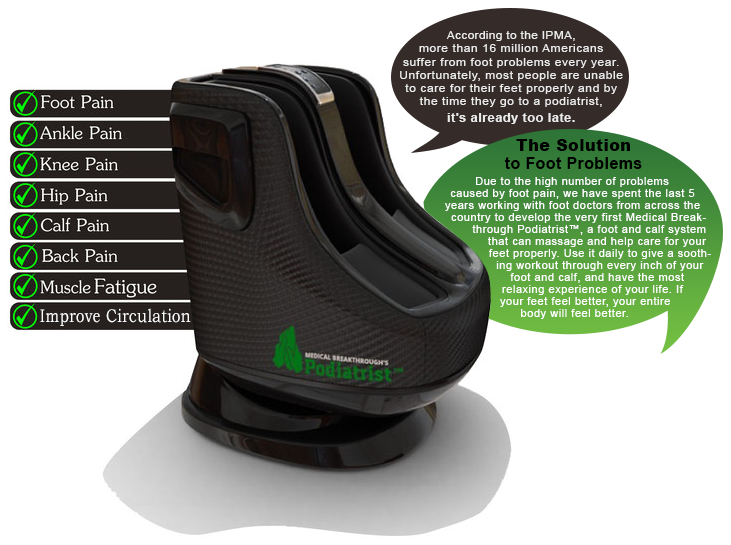BLOOD PRESSURE - CLINICAL STUDY
Hernandez-Reif, M., Field, T., Krasnegor, J. & Theakston, H.(2000). High blood pressure and associated symptoms were reduced by massage therapy. Journal of Bodywork and Movement Therapies, 4, 31-38.
High blood pressure is associated with elevated anxiety, stress and stress hormones, hostility, depression and catecholamines. Massage therapy and progressive muscle relaxation were evaluated as treatments for reducing blood pressure and these associated symptoms. Adults who had been diagnosed as hypertensive received ten 30 min massage sessions over five weeks or they were given progressive muscle relaxation instructions (control group). Sitting diastolic blood pressure decreased after the first and last massage therapy sessions and reclining diastolic blood pressure decreased from the first to the last day of the study. Although both groups reported less anxiety, only the massage therapy group reported less depression and hostility and showed decreased cortisol.
DANCE
- CLINCIAL STUDY
Leivadi, S., Hernandez-Reif, M., Field, T., Rourke, M., DÕArienzo, S., Lewis, D., del Pino, N., Schanberg, S. & Kuhn, C. (1999). Massage therapy and relaxation effects on University dance students. Journal of Dance Medicine and Science, 3, 108-112.
Thirty female university dancers were randomly assigned to a massage therapy or relaxation therapy group. The therapies consisted of 30-minute sessions twice a week for five weeks. Both groups reported less depressed mood and lower anxiety levels. However, cortisol decreased only for the massage therapy group. Both groups reported less neck, shoulder, and back pain after the treatment sessions and reduced back pain across the study.
DEPRESSION - CLINCIAL STUDIES
Field, T., Grizzle, N., Scafidi, F., & Schanberg, S. (1996). Massage and relaxation therapies' effects on depressed adolescent mothers. Adolescence, 31, 903-911.
Thirty-two depressed adolescent mothers received ten 30-minute sessions of massage therapy or relaxation therapy over a five-week period. Subjects were randomly assigned to each group. Although both groups reported lower anxiety following their first and final sessions, although only the massage therapy group showed behavioral and stress hormone changes, including a decrease in anxious behavior, heartrate and cortisol levels.
Sunshine, W., Field, T.M., Quintino, O., Fierro, K., Kuhn, C., Burman, I. & Schanberg, S. (1996). Fibromyalgia benefits from massage therapy and transcutaneous electrical stimulation. Journal of Clinical Rheumatology, 2, 18-22.
Adult fibromyalgia syndrome subjects were randomly assigned to a massage therapy, a transcutaneous electrical stimulation (TENS), or a transcutaneous electrical stimulation no-current group for 30-minute treatment sessions two times per week for 5 weeks. The massage therapy subjects reported lower anxiety and depression, and their cortisol levels were lower immediately after the therapy sessions on the first and last days of the study. The TENS group showed similar changes, but only after therapy on the last day of the study.
Field, T., Hernandez-Reif, M., Taylor , S., Quintino, O., & Burman, I. (1997). Labor pain is reduced by massage therapy. Journal of Psychosomatic Obstetrics and Gynecology, 18, 286-291.
Twenty-eight women were recruited from prenatal classes and randomly assigned to receive massage in addition to coaching in breathing from their partners during labor , or to receive coaching in breathing alone. The massaged mothers reported a decrease in depressed mood, anxiety and pain, and showed less agitated activity and anxiety and more positive affect following the first massage during labor. In addition the massaged mothers had shorter labors, a shorter hospital stay and less postpartum depression.
Field, T., Quintino, O., Henteleff, T., Wells-Keife, L. & Delvecchio-Feinberg, G. (1997). Job stress reduction therapies. Alternative Therapies, 3, 54-56.
The immediate effects of brief massage therapy, music relaxation with visual imagery, muscle relaxation, and social support group sessions were assessed in 100 hospital employees at a major public hospital. The effects of the therapies were assessed using a within-subjects pre-post test design and by comparisons across groups. The groups reported decreased anxiety, depression, fatigue, and confusion, as well as increased vigor following the session.
Field, T.M., Sunshine, W., Hernandez-Reif, M., Quintino, O., Schanberg, S., Kuhn, C., & Burman, I. (1997). Massage therapy effects on depression and somatic symptoms in chronic fatigue syndrome. Journal of Chronic Fatigue Syndrome, 3, 43-51.
Twenty subjects with chronic fatigue immunodeficiency syndrome were randomly assigned either to a massage therapy or an attention control group. Although depression and anxiety scores were initially as high as clinically depressed patients, analyses of the before versus after therapy session measures on the first and last day of treatment revealed that immediately following massage therapy depression scores, pain, and cortisol levels decreased more in the massage versus control group.
ELDERLY - CLINCIAL STUDY
Field, T., Hernandez-Reif, M., Quintino, O., Schanberg, S. & Kuhn, C. (1998). Elder retired volunteers benefit from giving massage therapy to infants. Journal of Applied Gerontology, 17, 229-239.
Elderly retired volunteers give massage to infants and were compared with those receiving massage themselves. After the first and last day sessions of giving massages, the elderly retired volunteers had less anxiety and depression and lower stress hormones. Over the 3-week period, depression and stress neurotransmitters decreased and lifestyle and health improved.
PREGNANCY - CLINCIAL STUDIES
Field, T., Hernandez-Reif, M., Hart, S., Theakston, H., Schanberg, S., Kuhn, C. & Burman, I. (1999).
Pregnant women benefit from massage therapy. Journal of Psychosomatic Obstetrics & Gynecology, 20, 31-38.
Twenty-six pregnant women were assigned to a massage therapy or a relaxation therapy group for 5 weeks. Both groups reported feeling less anxious after the first session and less leg pain after the first and last session. Only the massage therapy group, however, reported reduced anxiety, improved mood, better sleep and less pain by the last day of the study.
Latifses, V., Bendell Estroff, D., Field, T., & Bush, J. (2005). Father massaging and relaxing their pregnant wives lowered anxiety and facilitated marital adjustment. Journal of Bodywork and Movement Therapies, 9, 277-82.
Fathers learned to massage their pregnant wives conducted progressive muscle relaxation. Massage therapy lowered the fathers’ anxiety and improved marital adjustment.
Field, T., Deed, O., Diego, M., Gualer, A., Sullivan, S., Wilson, D. & Nearing, G. (2009). Benefits of combining massage therapy with group interpersonal psychotherapy in prenatally depressed women. Journal of Bodywork and Movement Therpies, 13, 297-303.
One hundred and twelve pregnant women who were diagnosed depressed were randomly assigned to a group who received group Interpersonal Psychotherapy or to a group who received both group Interpersonal Psychotherapy and massage therapy. The data suggested that the group who received psychotherapy plus massage attended more sessions on average, and a greater percentage of that group completed the 6-week program. The group who received both therapies also showed a greater decrease in depression, depressed affect and somatic-vegetative symptom scores on the Center for Epidemiological Studies-Depression Scal , a greater decrease in anxiety scale scores and a greater decrease in cortisol levels. The group therapy process appeared to be effective for both groups as suggested by the increased expression of both positive and negative affect and relatedness during the group therapy sessions.
Field, T., Diego, M., Hernandez-Reif, M., Deeds, O. & Figueiredo, B. (2009). Pregnancy massage reduces prematurity, low birthweight and postpartum depression. Infant Behavior & Development, 32, 454-460.
One hundred and twelve pregnant women who were diagnosed depressed were randomly assigned to a group who received group Interpersonal Psychotherapy or to a group who received both group Interpersonal Psychotherapy and massage therapy. The data suggested that the group who received psychotherapy plus massage attended more sessions on average, and a greater percentage of that group completed the 6-week program. The group who received both therapies also showed a greater decrease in depression, depressed affect and somatic-vegetative symptom scores on the Center for Epidemiological Studies-Depression Scale, a greater decrease in anxiety scale scores and a greater decrease in cortisol levels. The group therapy process appeared to be effective for both groups as suggested by the increased expression of both positive and negative affect and relatedness during the group therapy sessions.
Field, T. (2010). Pregnancy and labor massage therapy. Expert Review of Obstetrics and Gynecology, 5, 177-181.
Women who received massage therapy reported decreased depression, anxiety, and leg and back pain. Cortisol levels decreased and, in turn, excessive fetal activity decreased, and the rate of prematurity was lower in the massage group. In a study of labor pain, women who received massage therapy experienced significantly less pain, and their labors were on average 3 h shorter with less need for medication. An underlying mechanism we have been exploring is that these effects are mediated by increased vagal activity.

Copyright © ConsumersRanking.org. All Rights Reserved.This page is a demonstration of what an individual who uses the advertised products could potentially experience. Results from using these services will vary. Your results can be better or worse depending on the effort you put forth within them. These recommendations are solely based upon opinion. "As Seen On" logos and trademarks are owned by their respective companies. All claims made by us are made up for advertising purposes only. One of more of the services we review has been previously written about or featured by those companies. We have no affiliation with those companies. We make no representation or guarantee of the quality of these companies. The rates, fees and information on this page, while accurate at the time of writing, is subject to change and may have changed since originally published. That content, advertising space or post may not always be identified as paid or sponsored content.
